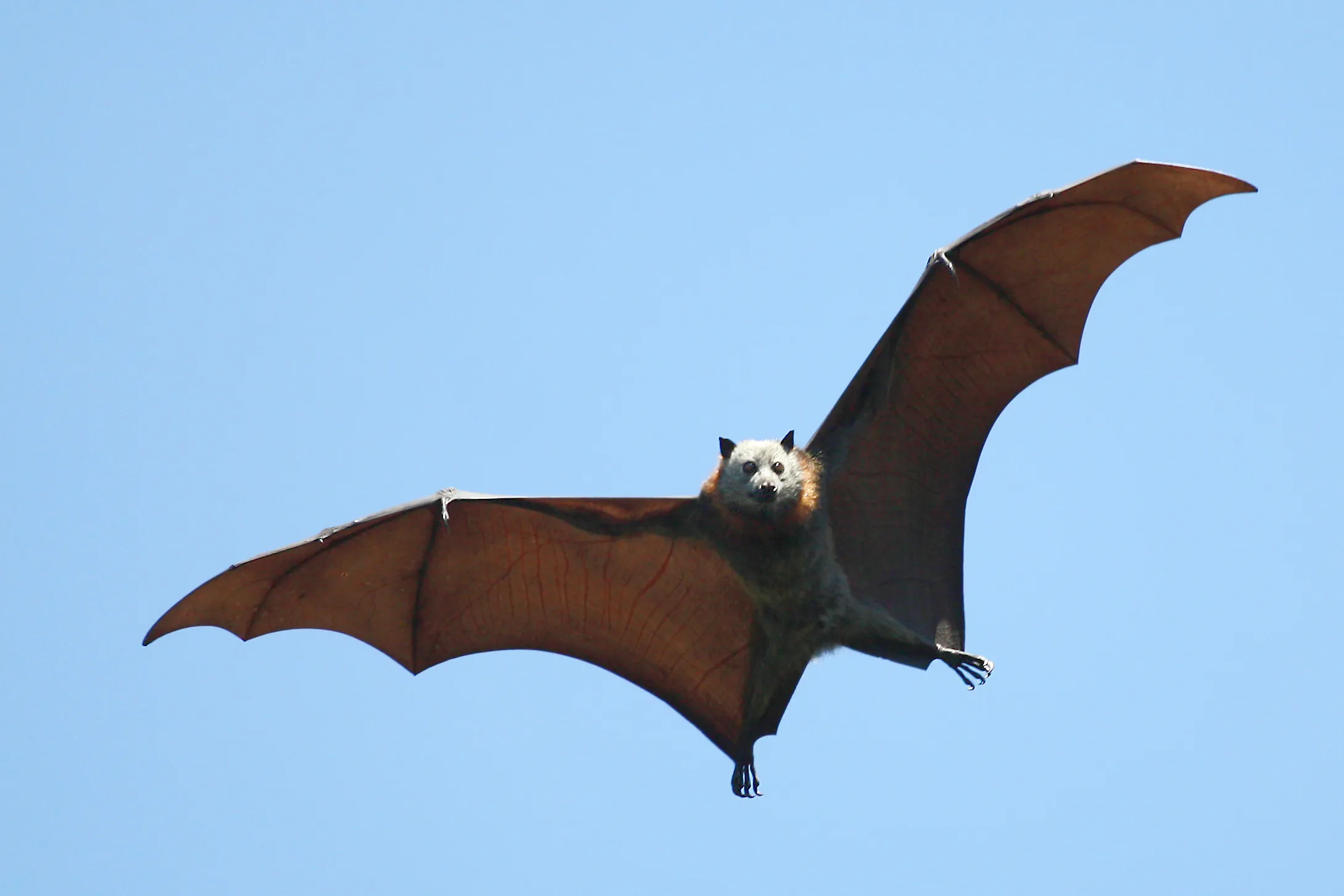
Key facts
- Australian bat lyssavirus (ABLV) is a virus that can spread from bats to humans, causing serious illness.
- The virus is closely related to the rabies virus and can be fatal if not treated.
- Any bat in Australia may carry ABLV.
- If you are bitten or scratched by a bat, you should quickly clean the wound and get medical attention.
- The best way to prevent ABLV infection is to avoid touching bats.
Australian bat lyssavirus infection (ABLV)
What is lyssavirus (ABLV)?
Australian bat lyssavirus (ABLV) is a virus that can spread from bats to humans, causing serious illness. ABLV is closely related to the rabies virus, which is another type of lyssavirus.
ABLV infection is very rare. Only 3 cases of ABLV infections in humans have been recorded in Australia. These have all been in Queensland. However, ABLV infection is fatal (causes death) if it is not treated.
What are the symptoms of ABLV infection?
ABLV symptoms are similar to those caused by rabies.
At first, symptoms of ABLV infection are like those of the flu. They include:
- headache
- fever
- fatigue (tiredness)
The illness then rapidly progresses to paralysis, delirium (a sudden change in your thinking and behaviour), seizures and death within 1 to 2 weeks.
What causes ABLV infection?
ABLV is found in Australian bats. ABLV can be passed from bats to humans via a bite or scratch from an infected bat.
Any bat in Australia, including flying foxes and fruit bats, can potentially carry ABLV. The behaviour or appearance of a bat is not a good guide as to whether it is carrying the virus.
ABLV has not been found in bats outside of Australia. However, overseas bats can carry and transmit other lyssaviruses, including rabies.
ABLV is spread from infected bats to people through bites or scratches. It can also be spread if the bat’s saliva comes into contact with your:
- eyes
- nose
- mouth
- broken skin
Living, playing or walking near bat roosting areas does not pose a risk of contracting ABLV.
ABLV isn’t passed on through contact with bat:
- faeces (poo)
- urine
- blood
Who is at risk from ABLV infection?
People who handle bats in Australia are at risk of ABLV infection.
How is ABLV infection diagnosed?
Your doctor will talk with you about what happened and whether you have any symptoms. Your doctor may:
- test your saliva
- do blood tests
- take a biopsy (a small sample of skin) from the back of your neck
- test your spinal fluid with a lumbar puncture
ABLV is a nationally notifiable disease . This means that if you have ABLV, your doctor will tell your local public health authority.
How is ABLV infection treated?
If you are bitten or scratched by a bat in Australia, you should immediately:
- wash the wound thoroughly with soap and water for at least 15 minutes
- apply an antiseptic with anti-virus action such as povidone-iodine, iodine tincture, aqueous iodine solution or alcohol (ethanol) after washing
- get medical help as soon as possible
The doctor will care for your wound and assess whether you are at risk of ABLV infection.
Even if you have had the rabies vaccine, you should follow these steps. There is no treatment for ABLV infection once symptoms have started.
If you are at risk of ABLV infection, you may need treatment. This consists of a combination of rabies immunoglobulin and rabies vaccine.
If you have not been vaccinated previously, you will need an injection of rabies immunoglobulin as soon as possible. You will also get a series of either 4 or 5 rabies vaccine injections over one month.
If you have been vaccinated against rabies before, you will need 2 further doses of vaccine.
Can ABLV infection be prevented?
You may need to be vaccinated if your work involves contact with bats and flying foxes. Talk to your doctor before beginning work with animals to ensure that you receive the right advice about vaccinations.
Otherwise, the best way to avoid ABLV infection is by not touching bats. Ensure that your children know that they should not touch bats.
Only people who have been trained in handling bats and vaccinated against rabies should ever touch bats or flying foxes.
What should I do if I find an injured or dead bat?
If you find an injured bat or flying fox, do not try to rescue it. Contact your local wildlife rescue group. They will have trained staff who can deal with bats safely.
If needed, place a box or washing basket over the bat. This will help protect people in the area while you wait for someone from the rescue group. Remove any pets or children from the area around the bat.
If you find a dead bat, do not touch it. Instead, use a shovel to help dispose of it.
ABLV vaccine
Vaccination is your best protection against ABLV infection. Because ABLV is from the same ‘family’, the vaccination is the same as the one given for rabies. The vaccine can be given before exposure to lyssavirus. This is called pre-exposure prophylaxis (PrEP). It can also be given post-exposure as part of your treatment.
The table below gives more information about the rabies vaccine.
| When to get vaccinated? | People who have contact with bats and laboratory workers who work with live lyssaviruses should be vaccinated. |
| How many doses are required? | 3 doses over 1 month. |
| How is it administered? | Injection |
| Is it free? | No, there is a cost for this vaccine. |
| Common side effects | The vaccine is very safe. Side effects may include a sore arm, swelling where the injection went in, headache or nausea. |

